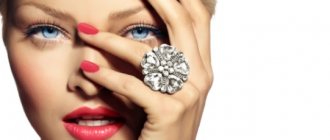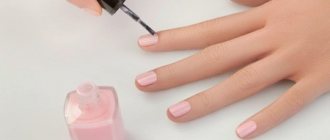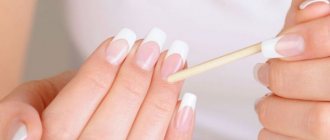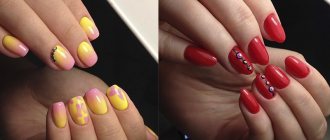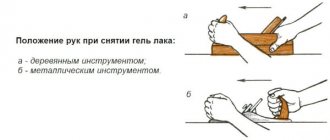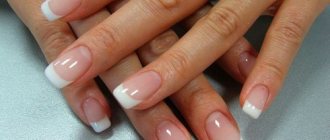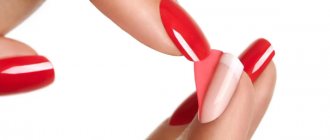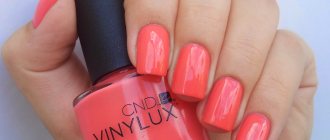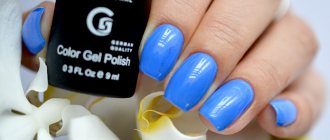How to properly remove gel polish around a nail
Chic design is a full-fledged art, the creation of which requires certain knowledge, skills and abilities. After all, an accidental mistake can ruin the entire nail design, only partially touching the cuticle or skin around the nail.
The use of any acetone-containing substances has a detrimental effect on the skin and the body as a whole, and the use of auxiliary tools (an orange or cotton swab) can ruin a manicure that has not yet hardened.

Before you start creating a design, you should study some of the nuances of how to remove gel polish from the skin around the nail or how to protect the skin with special methods.
Ways to keep the skin around the nail clean
There are several secret techniques with which the manicure is attractive and the skin around the nail is clean and unharmed.
Some of them:
- Using Vaseline.
- Using PVA glue.
- Applying rich cream.
- Use of special means.
In addition to the above methods of protection, there is one more method - gluing tape. But in the case of water manicure, this product will not be effective at all, since upon contact with water, the tape loses its adhesive properties, as a result of which it simply peels off and the varnish gets on the skin.
How to prevent polish from getting on the skin around the nail
Manicure design requires a subtle approach to applying varnish and designs, so you can warn yourself in advance against unprofessionalism. To prevent the gel from sticking to the skin and having to rub it for several minutes, you can go the other way. To do this, use protective measures by applying gel and cream formulations:
- Vaseline;
- fat cream;
- special cosmetics.
Some go further and use PVA glue. Professionals advise purchasing a liquid mixture called “defender,” which translates to “defender.” This product consists of natural rubber. This sticky consistency is applied around the nail plate before painting with gel. When the defender dries, a manicure design is performed. Next, remove it from the nail in the form of a gel film, carefully prying it off with tweezers. It is impossible to do without it if you plan to make a complex design - gradient, stamping, creative painting. In the case of cream and Vaseline, everything is simple, they are applied before coating the varnish, then the product is removed with a cotton swab with all the imperfections.
Advice! Choose a defender from the popular brands RIO Profi, El Corazon, Barlet. The product is usually pink, but recently other shades have appeared on sale.
Vaseline as a skin protectant
In order to create a protective barrier for the skin around the nail, you can apply Vaseline.
Gently lubricate the cuticle and the area near the nail.
We make sure that the product does not get on the nail, and if this happens, carefully wipe the nail plate with a cotton swab, since the oiliness of the Vaseline can affect the quality of your manicure.
Thanks to its special structure, Vaseline envelops the skin, thereby preventing the penetration of varnish into the layers of the epidermis.
Gel polish runs on the cuticle: what are the reasons and what to do
Manicure salons have not yet opened in all cities, so some girls have to, for example, make their own gel polish. Long, tedious and not without problems.
We've already talked about cuts, now let's move on to streaks - also a common problem when the base, coating or top can flow onto the cuticle and/or periungual fold.
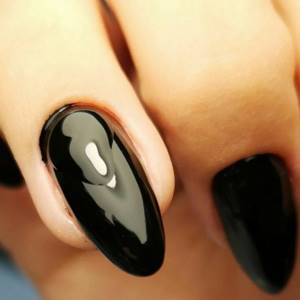
As it grows, the cuticle outline will be unclear and blurred. Many girls begin to pick at the swelling, which will lead to detachments in the future. To prevent this from happening and you don’t have to redo everything all over again, let’s look at the reasons for the formation of streaks.
Poor quality manicure
The presence of pterygium ( these are thin films layered on top of each other, between the cuticle and the socket
) and poorly processed cuticle.
By the way, when a master is told about “removing the cuticle,” they do not mean cutting it off completely (this is dangerous to health), but removing the pterygium.

Not all readers on my channel are manicurists, so they may have a poor understanding of what “pterygium” is. A diagram of the nail plate will help you understand the terms
Due to an insufficiently cleaned pterygium, any base will have streaks.
What to do?
I don’t recommend cutting manicure; it’s better to buy a remover - a product that softens the cuticle. Apply it to the cuticle. You wait until the pterygium gets wet (just don’t let the remover dry out) and simply clean it with an orange stick.
Dust
After you have done your manicure before applying the coating, the dust remains under the cuticle. She also provokes swelling
What to do?
Don’t just brush over your nails, but carefully remove the dust under the cuticle. This can be done with an orange stick, which is tightly wrapped in a napkin.
Holding your hand in the lamp incorrectly
You put your hand under the lamp and accidentally touch the coating. We get something like the one in the photo below.
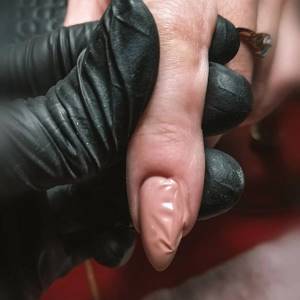
You can't put your hand down. Drying all your fingers at once is wrong: either 4 at once and the thumb separately, or each nail separately.
What to do?
If you suddenly touch the coating of the lamp, then remove with a napkin everything that has not dried, then dry the nail completely. Then, in the lateral sinuses, carefully clean the nail with a cutter, sand the surface, degrease and reapply the coating.
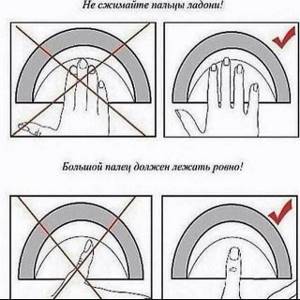
Problem with materials
The consistency of the varnish or base is too thin. The problem may also be with a specific shade that constantly flows.
What to do?
Here are the options:
1) if the varnish is too liquid, put it in the refrigerator for 10-15 minutes, the consistency will no longer be so liquid;
2) apply the base in two stages: first apply a thin layer, dry, then apply a second layer with leveling;
3) if the problem is with a specific shade, then simply remove the sticky layer from the base;
4) choose a material with dense pigment that is convenient for you to stop all these dances with tambourines with liquid materials.
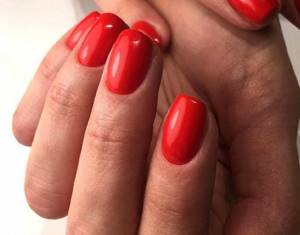
Problem with dyeing technique
There is excess material on the brush, or the brush itself is wide, and you are painting the cuticle with it.
What to do?
We paint the area of the cuticle and side ridges with a semi-dry thin brush ( this is when, before applying, we removed the sticky layer from the brush with a napkin, i.e. excess material
). Only then can you apply a thick layer to the nail plate with another brush.
Source
- about the author
- Want to contact me?
Elena Kruptsova
Chief Editor ,
Manicurist with many years of experience. All my clients ask me to share their ideas on the Internet. With me you will have the brightest nails and new ideas for inspiration.
An interesting property of PVA glue
The most unusual method of protecting the cuticle is ordinary resin.
Take a medium-sized brush and carefully apply it to the finger ridges around the nail (we act extremely carefully so that the glue does not get on the nail itself).
When exposed to air, PVA forms a film that adheres tightly to the skin, thereby repelling varnish particles. Any coloring material that gets on the film can be easily removed using a cotton swab dipped in water.
This method is perfect for manicure at home, because it is quite simple and does not require additional costs.
Tools for removing gel polish yourself
You can remove gel polish at home with a removing liquid - either regular or specially created for working with the coating. In a familiar liquid, the presence of acetone is inevitable, since the gel cannot be removed without it. And what else can you use? Of course, it is better to use branded products.
To work you will need:
- Cotton pads are cut in half and divided in half.
- Fat cream.
- Food foil, cut into small pieces (you can use chocolate or candy wrappers).
- Orange or plastic sticks.
- Cuticle oil.
- Sanding file.
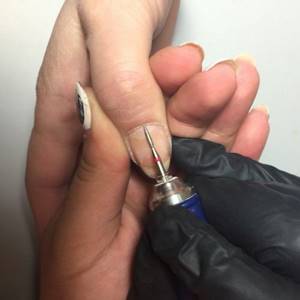
Step-by-step guide to action:
- Preparing the nail plate at home involves treating it with a sanding file to remove shine (shellac is not required for a manicure).
- When solving the problem of how to remove gel polish from nails, it is very important to wash your fingers in warm soapy water and cover the skin around the nail with a rich cream. This will protect the dermis from the aggression of the coating removal solution.
- Moisten a cotton pad with nail polish remover and apply it to the plates one by one. The cotton wool is secured around the fingers with foil.
- A special liquid melts the gel sticky layer after 10 minutes. The usual composition with acetone will extend this phase by another 7 minutes.
- To speed up the process, lightly massage the plate. And then the coating can be easily removed along with a cotton pad. However, more often than not, an orange stick is required to remove the layer. It happens that the manipulation aimed at how to remove gel polish at home should be repeated (when the coating is applied too generously).
- The nail plate becomes shiny after working with a sanding file.
- At the end of the process, the skin is treated with cuticle oil.
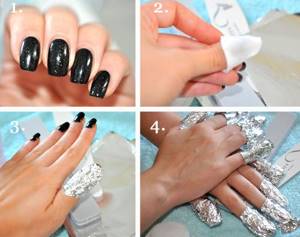
It is considered a mistake to remove the gel using the usual acetone, as well as using only the mechanical method - this leads to injury to the surface of the nail.
Manicurists advise removing gel polish first on the fingers of one hand, and then on the other. A hand free from the procedure may be needed, for example, to massage the nail plates.
You can use the new coating at home immediately after removing the old one.
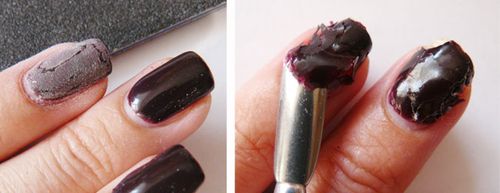
Fat cream as a method of protection
The classic and most common option for preventing nail polish from seeping under the cuticle is to use regular hand cream. The main feature of this product is its maximum fat content, thanks to which the cream creates an invisible film that keeps the skin unharmed.
The conditions for applying the cream are similar to using Vaseline:
- Carefully, without getting it on the nail surface, apply a protective layer.
- After the procedure, remove the cream using a cotton swab.
As you can see, when creating a manicure, removing excess polish will not cause you much trouble.
Remember that this method is not suitable for applying an Ombre style manicure, since this design involves extensive coloring of not only the nail plate, but also the skin around it. Particles of varnish can penetrate the upper layers of the skin, so special compositions are often used to perform Ombre manicure.
Ways to extend the life of a manicure with gel polishes
Peeling of gel polish is not only visually unpleasant - it can also cause the proliferation of pathogenic microorganisms with subsequent infection. To ensure that the gel polish lasts as long as possible and does not come off as a film a few days after application, you should follow the nail care recommendations given by the master himself:
- do not wet your nails 2 hours before and after the procedure;
- try to avoid prolonged contact with the ground, dust or warm water;
- do not remove gel polish yourself;
- Use gloves when working with chemicals.
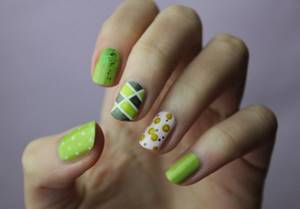
With regular (monthly) visits to nail salons or private nail specialists, it is worth strengthening the nail plates from time to time. You can renew your manicure no more often than once every 3 weeks. Sometimes you should take breaks. Even such simple actions will preserve the integrity and aesthetics of the varnish coating until the next session.
If you are confident in the health of your nails and proper manicure care, you should think about changing the master if the problem remains relevant.
Use of special protective equipment
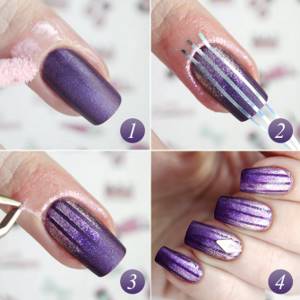
Today, there is a fairly large range of special products that help make the process of protecting the cuticle as easy as possible. These components have proven themselves well among professionals.
Priorities of special protective materials:
- The main component of this product is natural rubber, without the admixture of harmful chemicals.
- It has a pleasant pink color and a delicious aroma. Thanks to the special composition of essential oils, it has a positive effect on the skin of the hands.
- It dries quickly, which is a huge plus when used by professionals.
- The bottle is compact and easily fits into a small cosmetic bag.
- A convenient brush makes it easy to apply to the skin, avoiding getting it on the nail.
- It can be stored for a long time and has low consumption.
Now, to apply a neat manicure, you don’t have to peel off the gel polish that gets on the cuticle, just apply a specially designed protection product and enjoy a delightful manicure.
Tools to help us
If it so happens that you missed the procedure for protecting your cuticle, then we will have to resort to using the following tools:
- Orange stick.
- Toothpick and cotton swab.
- Small flat brush.
Such methods are less relevant, since careless movement of an orange or cotton swab can damage an already created manicure, and the cotton wool will leave some lint on the surface of the undried varnish.
Using a pointed stick
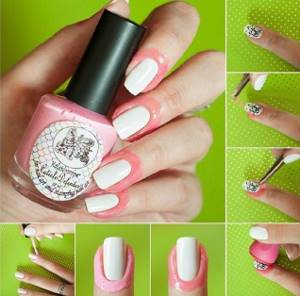
A special orange wood stick can be found in any professional store. More often it is used to work with cuticles, but in a situation with dried varnish it will also be appropriate.
- First, wet the edge in nail polish remover and shake off the excess.
- Gently rub over areas of the skin, collecting spilled Shellac, and wipe on a napkin.
- We repeat the procedure, periodically moistening the orange stick in a special liquid until the excess varnish is completely eliminated.
Using a cotton swab
The easiest way is to use a regular cotton swab.
- Soak it in nail polish remover and gently wipe the skin.
- But this method will not be able to reach hard-to-reach places, since the cotton swab is quite large. Here an ordinary toothpick and a small piece of cotton wool will come to our aid.
- We wrap the toothpick, moisten it in liquid and similarly wipe the areas close to the nail plate.
- We work extremely carefully so as not to smear the wet Shellac.
- After eliminating the excess, we continue the manicure procedure.
Brush - assistant
In this case, any small brush will do. It can be a brush for artistic painting or an ordinary brush for used nail polish (be sure to wash it).
The principle of removing varnish is quite simple.
- Wet the brush in nail polish remover.
- Using gentle touches, we cleanse the skin where there is excess Shellac.
Try it, choose the most convenient ways to protect gel polish from running, and your manicure will be neat and well-groomed.
Application technique
Follow each of the recommendations:
- Before carrying out the procedure, we carefully cut or push back the cuticle.
- We collect a sufficient amount of product, then wipe one side of the brush on the side. We apply gel polish or shellac with the side from which the excess was not removed.
- It is very important to put the correct amount of product on the brush: so that the bristles are completely enveloped, but not dripping from them.
- We pull the side rollers to the sides - this way you have a better chance of applying the gel to the nail closer to the skin. By the way, if you want to visually lengthen the nail plates, do not paint too close to the skin - leave the plates a millimeter apart on the sides.
- We paint the base and finish in a thin but even layer.
- We apply all liquids in the same way, namely: dip the brush, remove the excess, place a drop on the plate a few millimeters from the root of the nail. Then we move to the root, to the cuticle (we adjust the distance to the cuticle with a brush) and stretch the strip to the free edge. Then in the same way we paint the side surfaces and again the central one. Dip the brush once, paint the nail completely once.
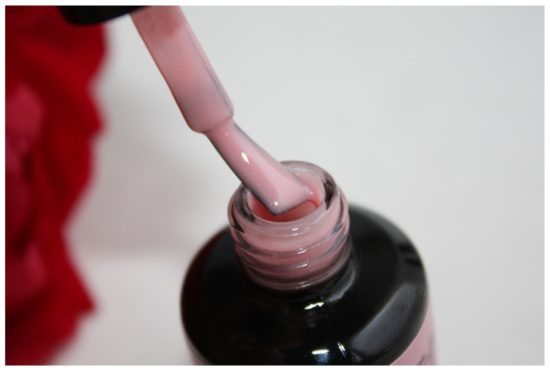
Very important: do not try to paint the nail all the way to the cuticle . A gap of half a millimeter will protect you from jambs, the coating will look as even, neat and beautiful as possible. In the case of gel polish, at the finishing stage you need to apply makeup so as to cover the border of the colored varnish, so this technique is especially relevant.
- We place each nail in the lamp immediately after covering it again. A minute of delay - and the product flows down to the nail folds, here the coating becomes thicker, which means the manicure comes off faster. And if the product is liquid or you apply a lot of makeup, it will float onto the skin or even under the nail.
- Do not perform the procedure too close to the UV lamp.
- If the skin is dirty, it is best to erase all the layers from the nail and paint it again - such a correction is fraught with complete failure. If the defect is minor, we remove it with our own nail (professionals forgive me) or with a special pencil to remove fragments. It is impossible to qualitatively remove defects after even a second of placement in a lamp.
- Some novice young ladies use a skin protection technique (you can often find it on the Internet): cover it with a thin layer of rich cream near the nail, remove it at the end. We wouldn't recommend doing this. Firstly, even the slightest particle of oil that gets on the nail will ruin the manicure, it will come off very quickly, and secondly, it is long, very painstaking and inconvenient. It is better to pay attention to precise and precise application with a regular brush, practicing on a dummy or your own fingers.
To begin with, we can recommend using varnishes of non-contrasting colors, the boundaries of which may not be so clear. Look, in a month you won’t need the services of a professional to get a perfect chic red manicure.
Photo of nail polish coating
Even more photos at the link: Gel polish photo.
